Masereel’s wordless novel, Mein Stundenbuch, was significant in bringing the artist and the wordless genre to a much larger audience than the initial French publications. Some people, including myself, have mistakenly assumed this German title meant “My Student Book”. In fact, in German, “stundenbuch” means “book of hours” so it translates the same as the original French – “My Book of Hours”.
- Title: Mein Stundenbuch
- Author and Illustrator: Frans Masereel
- Introduction: No
- Date of publication: 1920
- Publisher: Kurt Wolff (double “f”)
- Place of publication: Munich
- Printer: Dr. C. Wolf & Sohn (single “f”)
- Copyright: artist?
- Dimensions: 15.7 x12.7 x 3.2 cm (6 1/4 x 5 x 1 1/4 inches)
- Dust jacket: No?
- slipcase: ?
- Binding: hard cover
- Language: German titles, etc
- Paginated: unpaginated
- Printed: recto
- Printed from the original wood blocks
- References: Ritter Nr. 6. I., Avermaete 4.1a
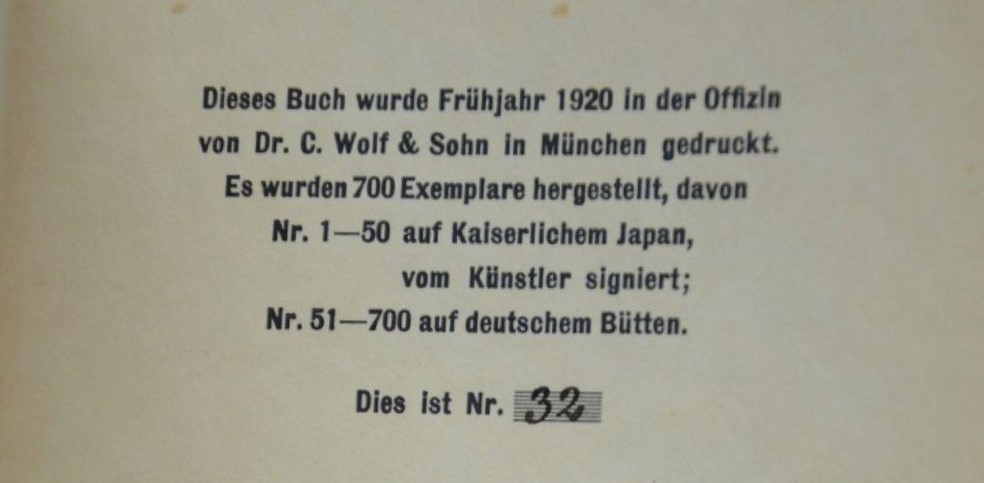
Translation:
This book was printed in the spring of 1920 in the office
of Dr. C. Wolf & Sohn in Munich.
700 copies were produced, of which
Nos. 1-50 on Imperial Japan, signed by the artist;
Nos. 51-700 on German laid paper.
This is No. ###
- Note: all copies should be numbered
- #1 – 50 should also be signed
- a lack of a signature on copies #51 – 700 is not a deficiency.
No 1 to 50 (1920) Mein Stundenbuch
- full red leather
- at least one copy has fine leather binding by Frieda Thiersch (probably custom made)
- slipcase
- on Japanese paper
- numbered
- signed in mauve pencil on frontis (self-portrait)
- TEG + foredge?
- Fore edge cut, bottom edge uncut
- 5.5″h x 4.75″w
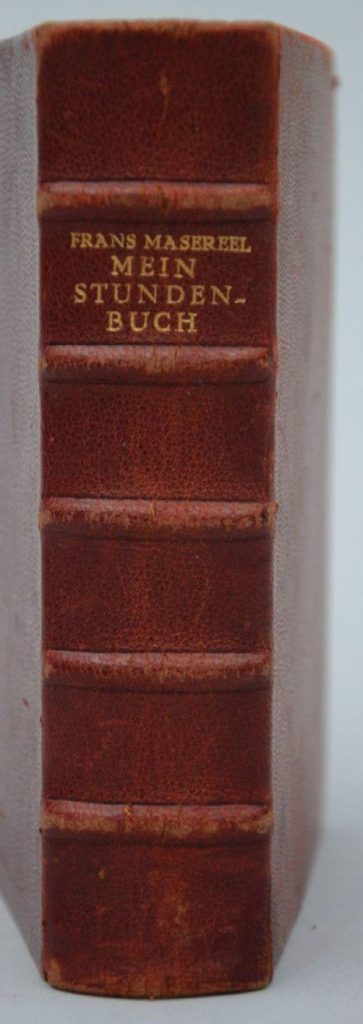
below. Which is the original issue?
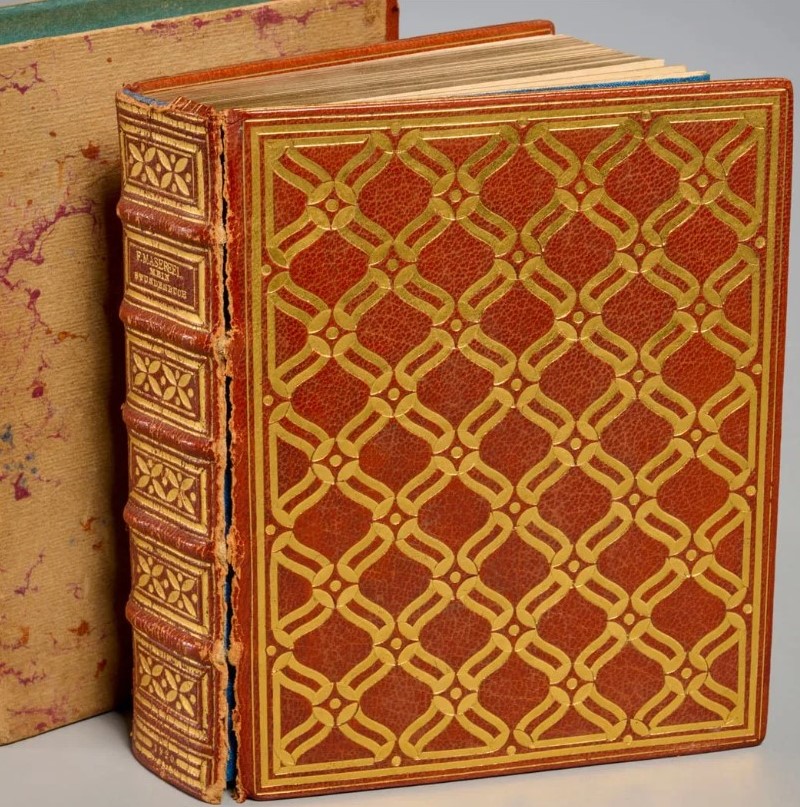
or private binding? Image credit: Millea Bros
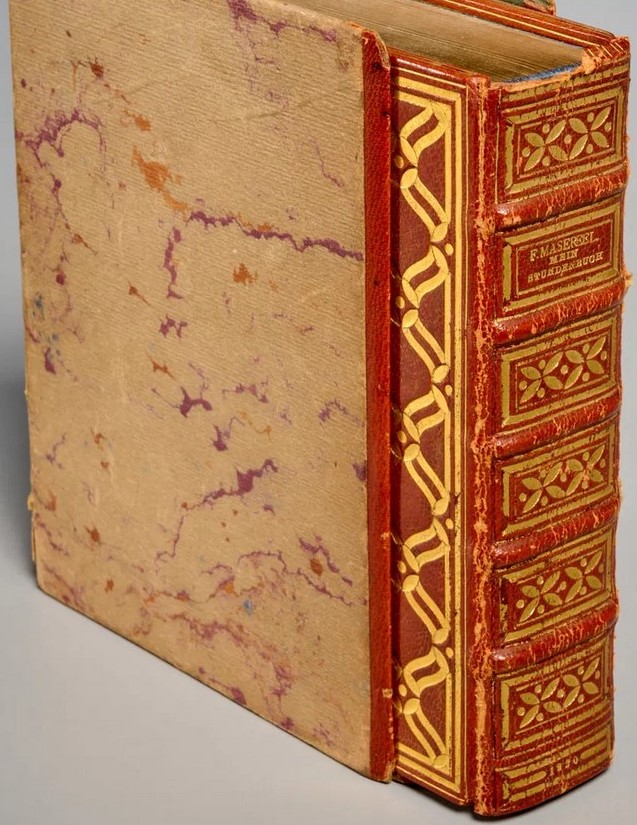
is a private binding. Image credit: Millea Bros
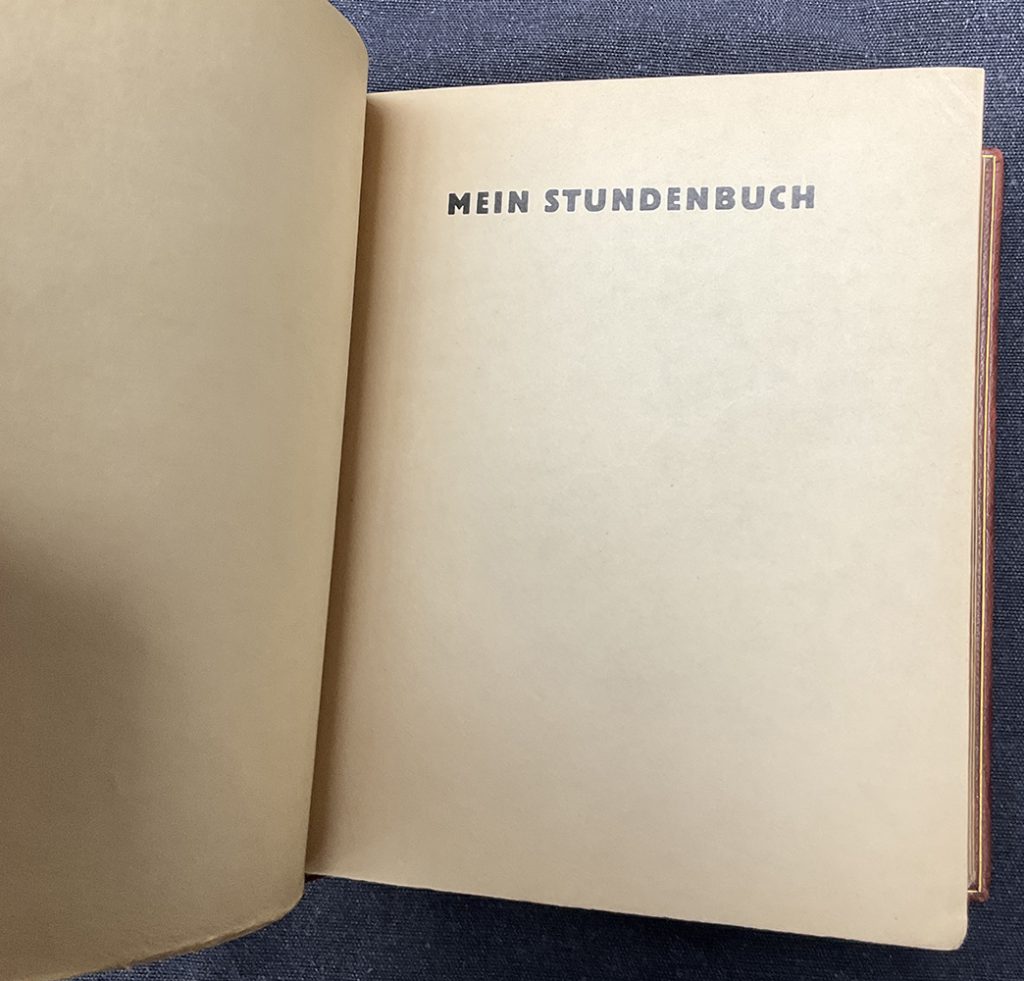
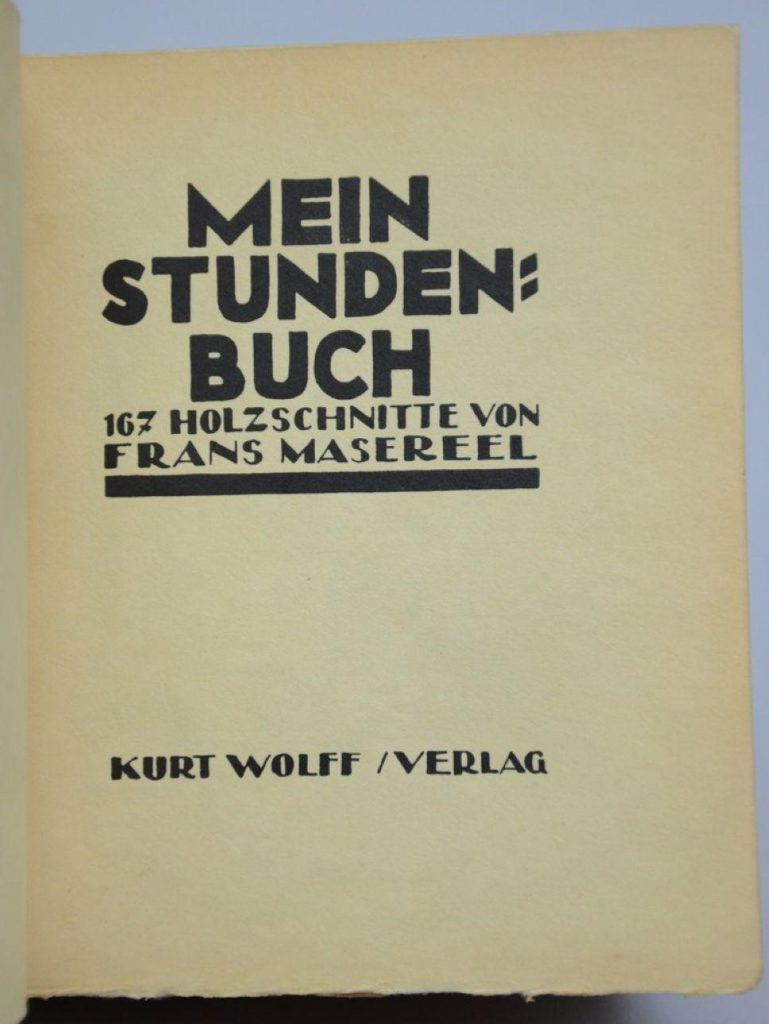
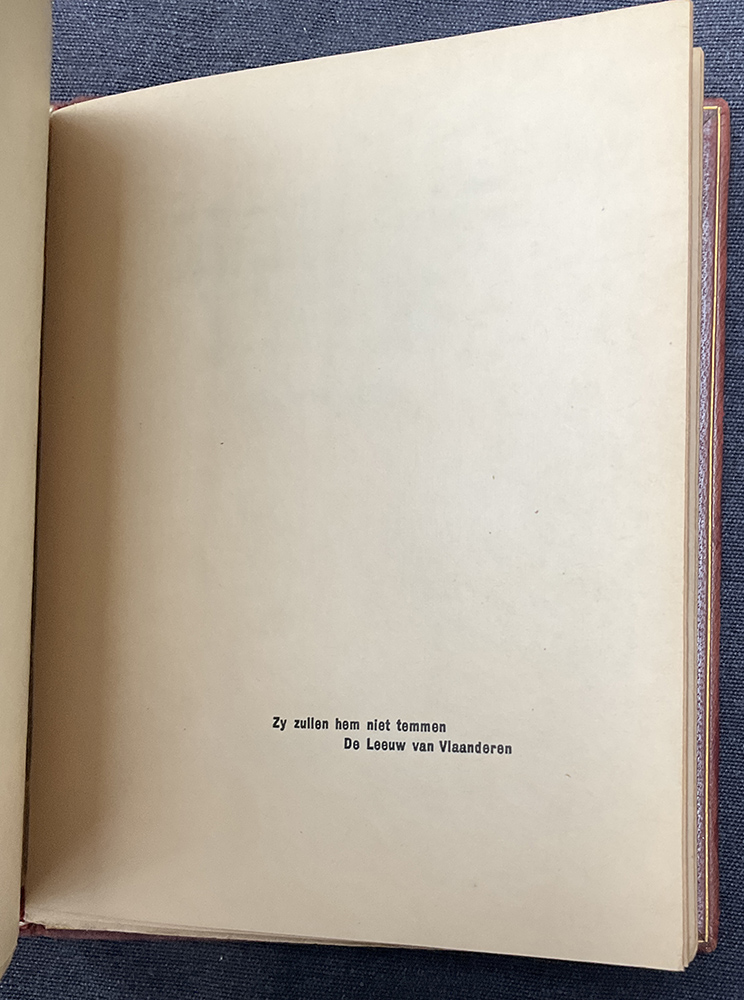
The Lion of Flanders”
Note: Masereel was Flemish – does this refer to him??
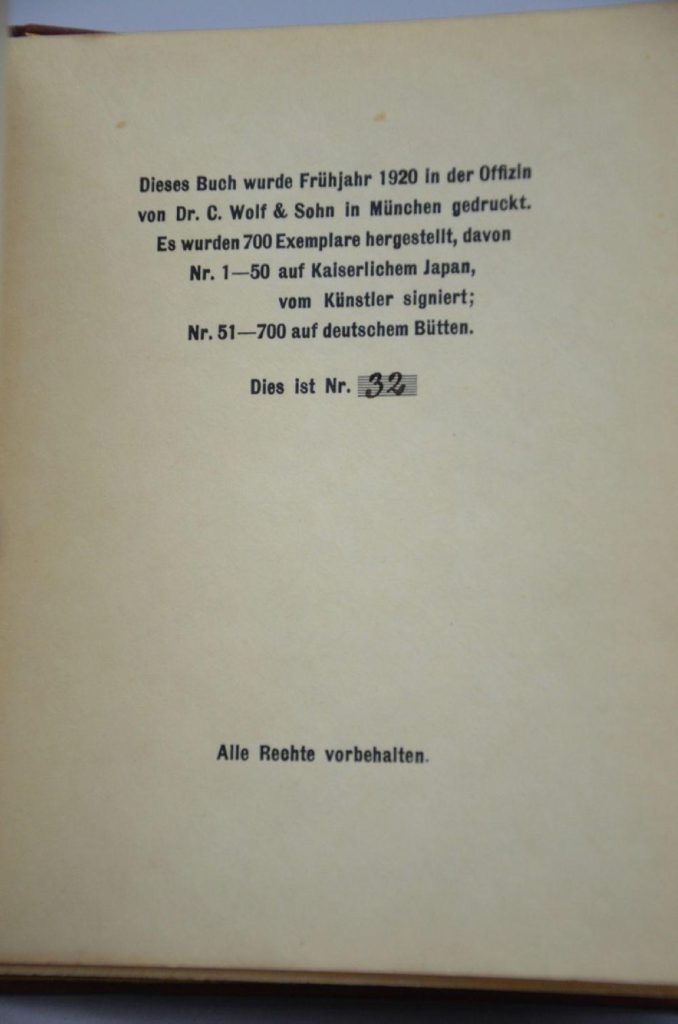
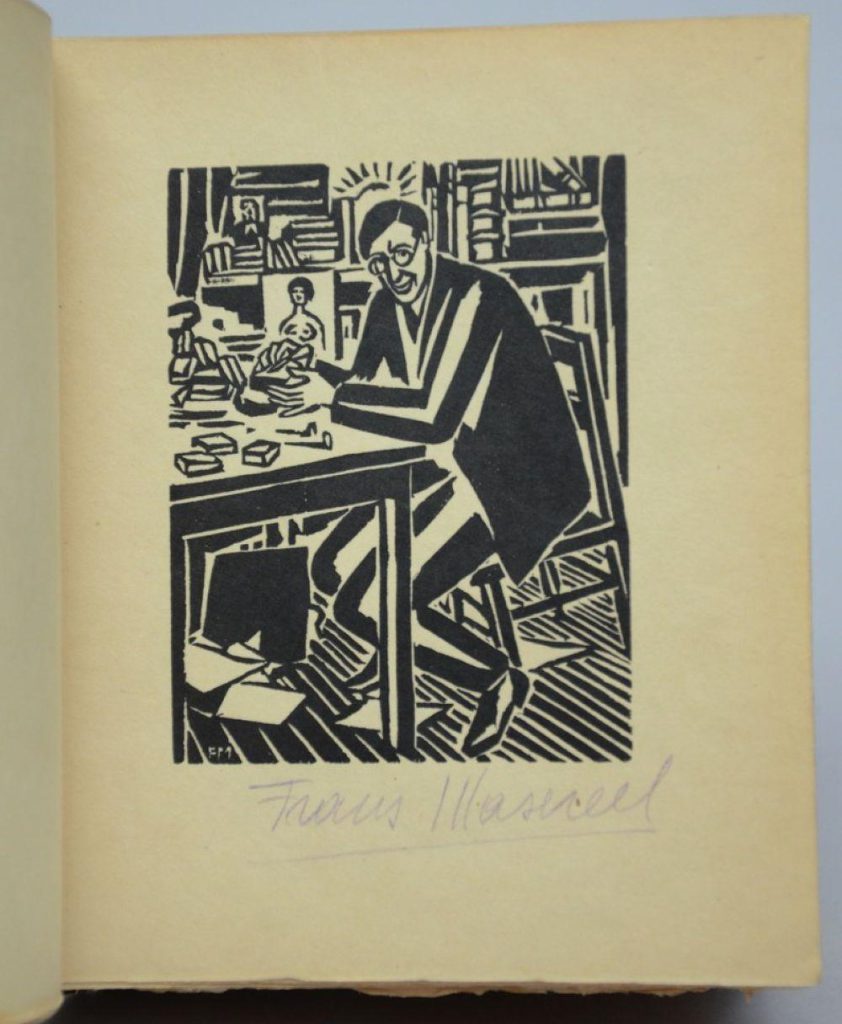
No 51 to 700 Mein Stundenbuch
- 3/4 leather with marbled paper over boards
- on deutschem Bütten (Deutsche Bütten) German laid paper?
- some in red/some in black leather (some colour differences may be due to toning over time);
- black leather appear to have blueish marbled boards
- red leather appear to have reddish marbled boards
- Some spines appear to be brown – I believe these were black but now faded
- numbered but not signed (some copies are signed but the lack of a signature is not a deficiency)
- Sextodecimo [16 cm]
- images printed recto only
- Top edge gilt.
- Slipcase?
- Knight B a 6.1. – v. d. Gabelentz B-4-Ia.
- Number of pages: 171
- Dimensions: 16 x 12 cm
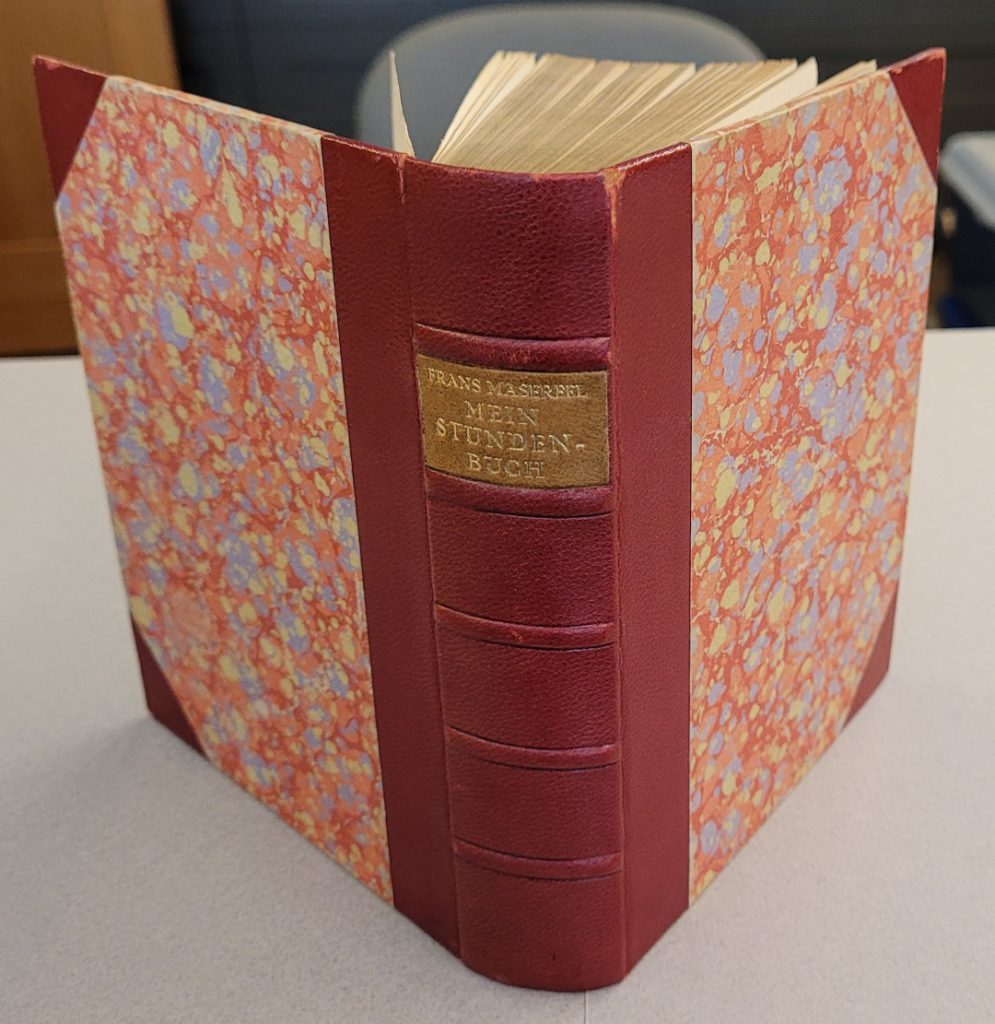
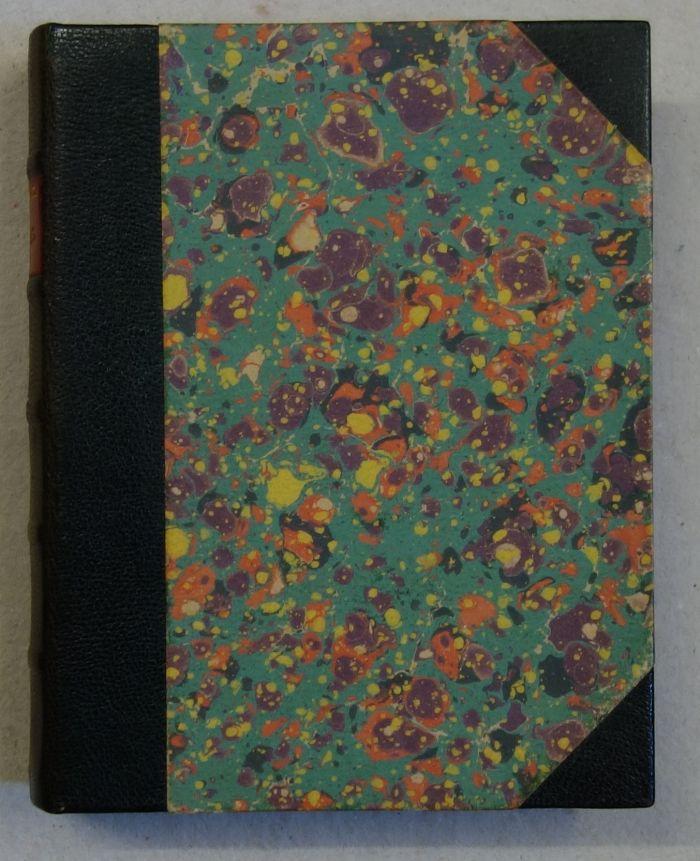
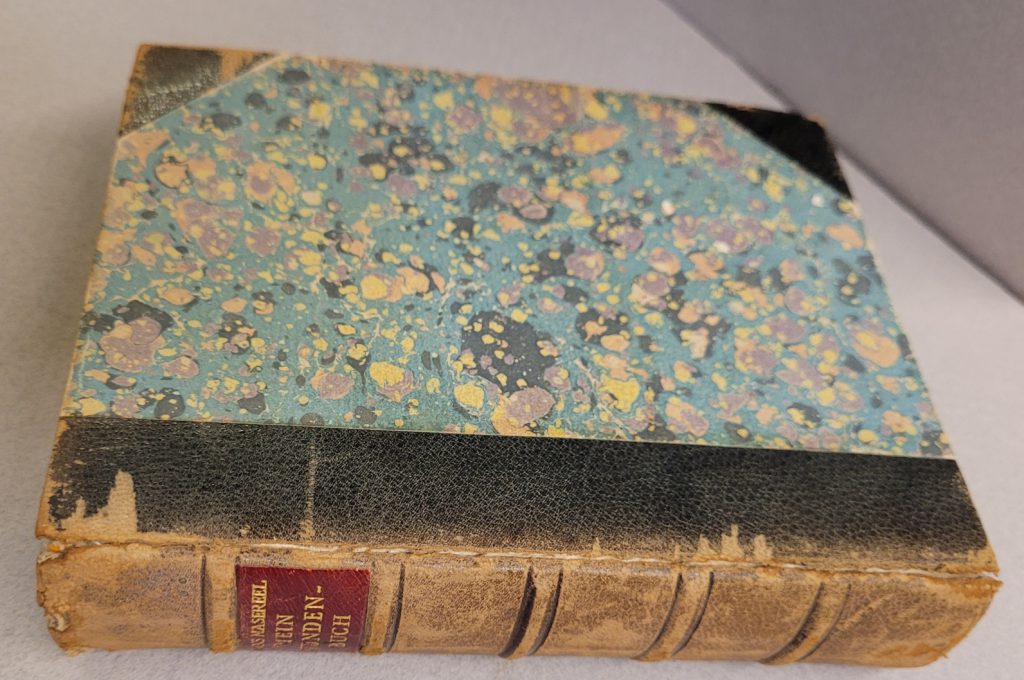
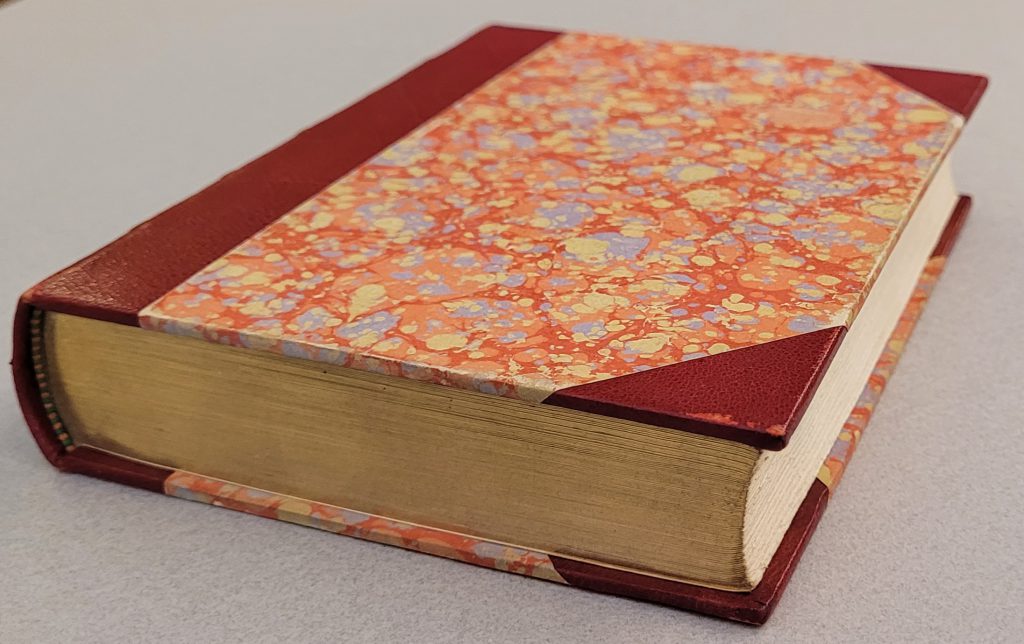
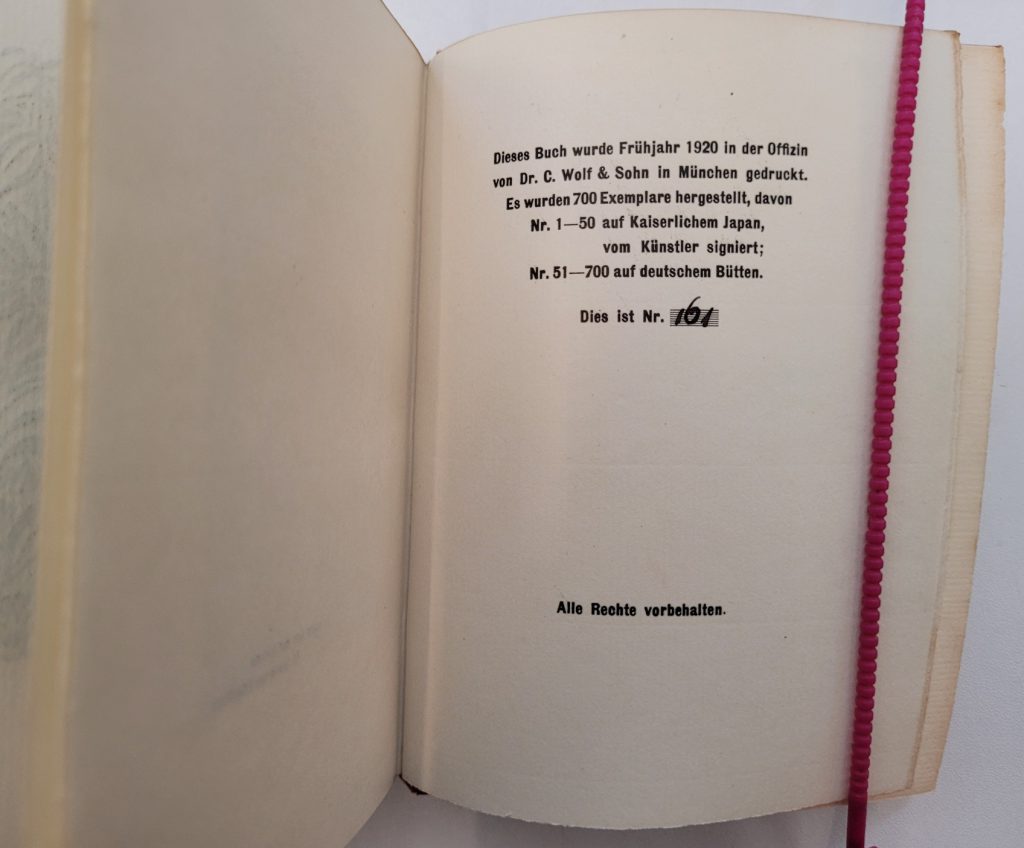
Wolff – Mein Stundenbuch Trade editions 1926/27/28
Images in the Trade editions were printed recto and verso unlike the limited editions that were printed only recto.
NOTE: these Trade editions have 165 images versus the 167 images in the original publications. The images of the protagonist urinating on the public and an image of fornication were omitted
- 1926 printing; 1- 5 thousand copies
- References: Avermaete 4.1b

- 1927 2nd printing; 6 to 10 thousand copies
- References: Avermaete 4.1c

- 1928 3rd printing; 11- 15 thousand copies
- References: Avermaete 4.1d
- cardboard cover with title and spine designation and dust jacket
Unlike the 1920 limited edition, the trade copies came with a 32 page introduction by Thomas Mann.

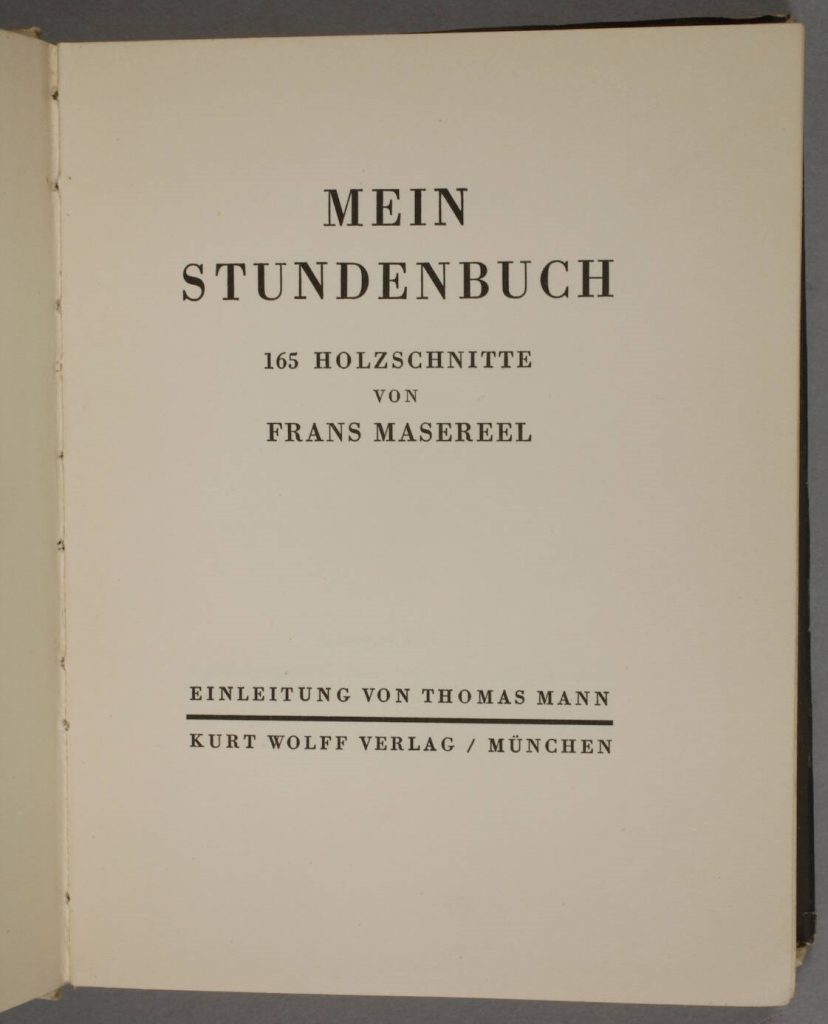
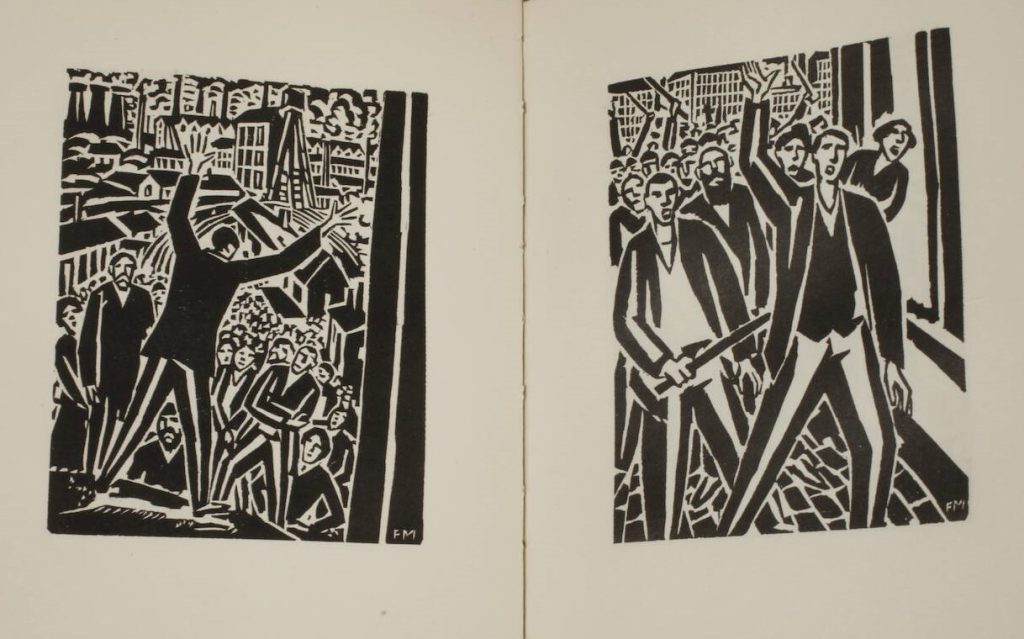

NOTE: the book title is Mein Stundenbuch (My Book of Hours) but the above advertisement reads Das Stundenbuch (The Book of Hours).
Translation of the Thomas Mann portion of the advertisement above:
Darken the room! Sit down by the reading lamp next to this book and let its concentrated light fall on its pictures as you turn page after page: not too carefully; it is no misfortune if you do not immediately understand each picture, any more than that is decisive in certain other places. Let his powerful black and white faces, moving with light and shadow, run through your mind, starting from the first, from the railway carriage roaring crookedly in the smoke that carries the hero into life, to the starry sky of a defleshed man, finally: where are you? By what popular entertainment do you think you have been taken, albeit taken in an incomparably more intimate and purer way than you have ever been granted there?
A foreign film magazine recently asked whether people believed that something intellectual and artistic could ever be made out of cinema. I answered: “Oh, yes.” They then asked which film I had ever seen that had moved me the most. I wrote: “Masereel’s Stundenbuch.”
Thomas Mann
COMMENTS
If you disagree with something on this page, have an improvement, or have a comment please contact me
wn at wordlessnovels.com
Any information used will be given a credit line.